| Home | |

|

|
|
|
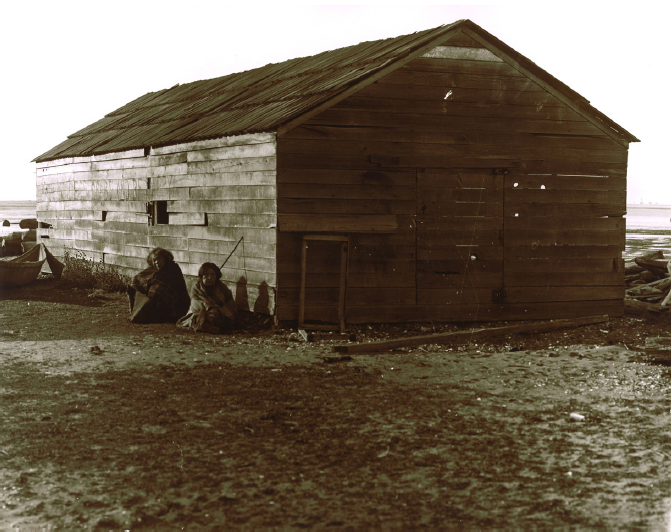
A structure in downtown Port Townsend, near what is now Memorial Field.
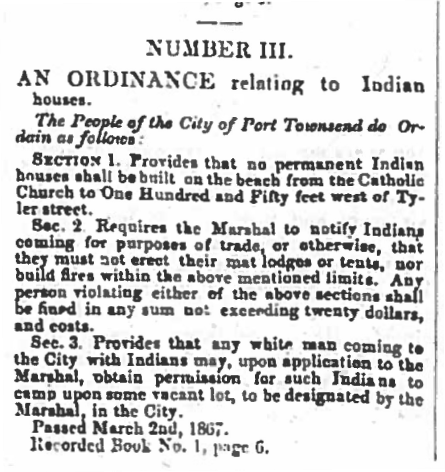
An Ordinance relating to Indian Houses The people of the city of Port Townsend do ordain as follows: Section 1: Provides that no permanent Indian houses shall be built on the beach from the Catholic Church (Madison Street) to one hundred and fifty feet west of Tyler Street. Sec. 2: Requires the Marshal to notify Indians coming for purposes of trade, or otherwise, that they must not erect their mat lodges or tents, nor build fires within the above mentioned limits. Any person violating either of the above sections shall be fined in any sum not exceeding twenty dollars, and costs. Sec. 3: Provides that any white man coming to the City with Indians may, upon application to the Marshal, obtain permission for such Indians to camp upon some vacant lot, to be designated by the Marshal, in the city. Passed March 2, 1867. Recorded Book No. 1, page 6 |
The village of qatáy once sat near the bluff at what is now the corner of Monroe and Water Streets. It was the principal village of S’Klallam people at the time of the treaty signing, and home to their Chief, čičməhán (Cheech-ma-han).
James Swan’s 1859 census showed “300 whites and 200 Klallams” living in Port Townsend. qatáy village was burned on August 23, 1871 by order of the federal government, prompted by complaints from the settlers. Destruction of the village of qatáy forced many of the S’Klallam to move to the Skokomish Reservation, Port Gamble, Port Discovery, or to join family in Dungeness (stətíɬəm), who would purchase land at Jamestown in 1874. Others, including cicm?hán and his family, moved across Port Townsend Bay to Indian Island, where villages had been located for hundreds of years.
Many S’Klallam adjusted to non-Indian communities, working at local mills, on farms, fishing and providing water transportation to settlers on land and waters that had always been Native homeland.
In 2018, a county project at Memorial Field uncovered remnants of that village. Sediments were sifted for artifacts and other evidence of the area’s historical residents. The Weekly Argus, 11 May 1871, page 4, column 3 Number III
In this photo, taken before 1890, you can see how built up the downtown had become, less than 19 years after the
S’Klallam village had been destroyed. This view is looking east, with the railroad line construction in the foreground,
running to the docks.
|
|
|
Superintendent Thomas J. McKinney (Olympia, WA) to Indian Agent Eels (Port Townsend,
WA), August 10, 1871
Eels to McKinney, August 30, 1871 |
||
|
Previous Trail Sign |
Next Trail Sign |
|
|
|
||
|
Fowler Building
|
|
|
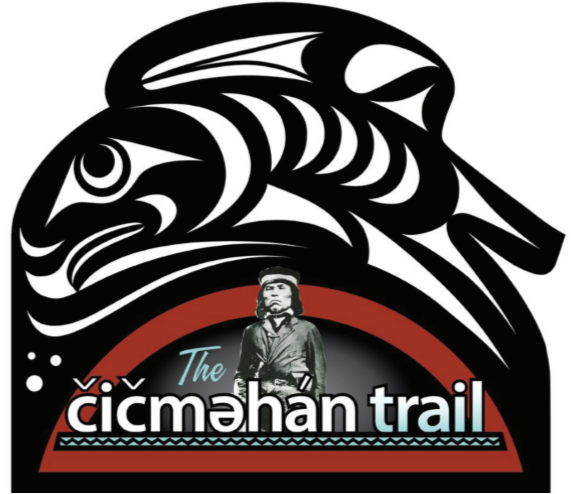 Exhibit Home | Sponsors | About | PDF Trail Map
|
|
|||||||||||||
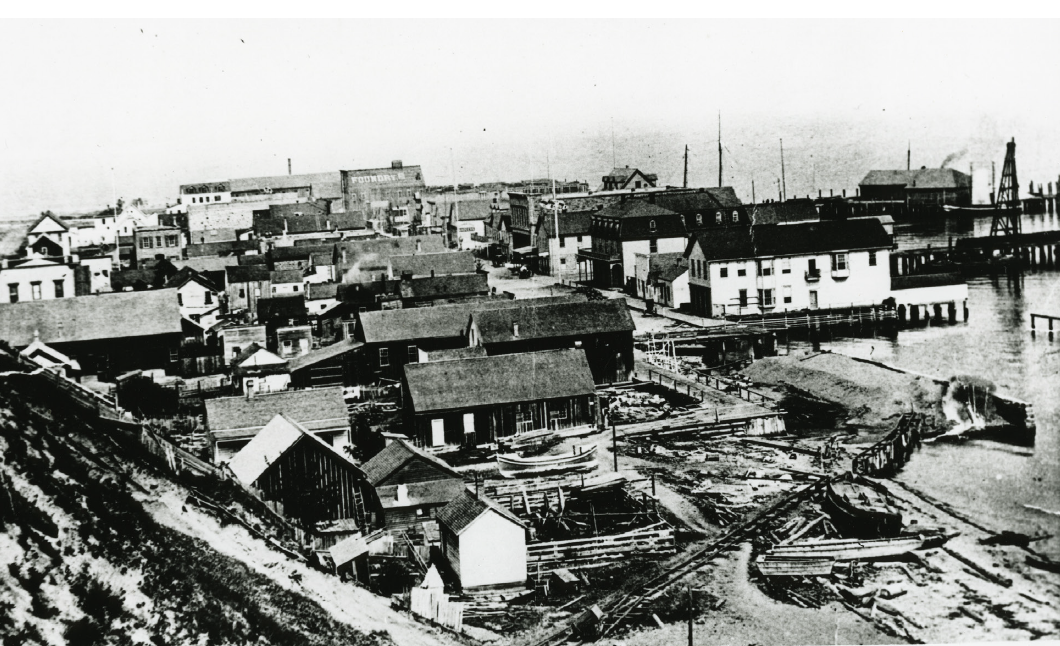
 čičməhán Trail Map...
čičməhán Trail Map...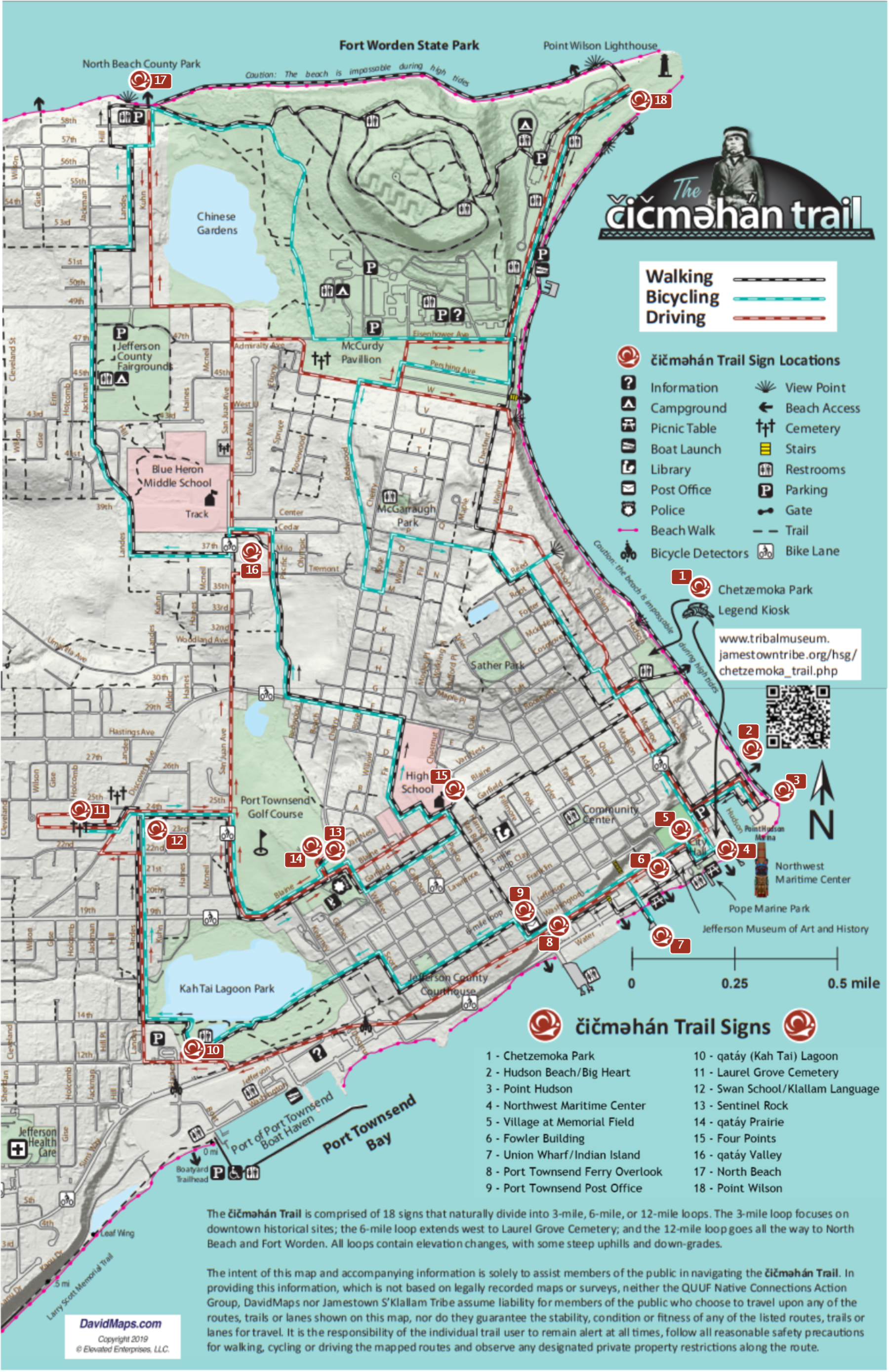
 Northwest Maritime Center
Northwest Maritime Center 

